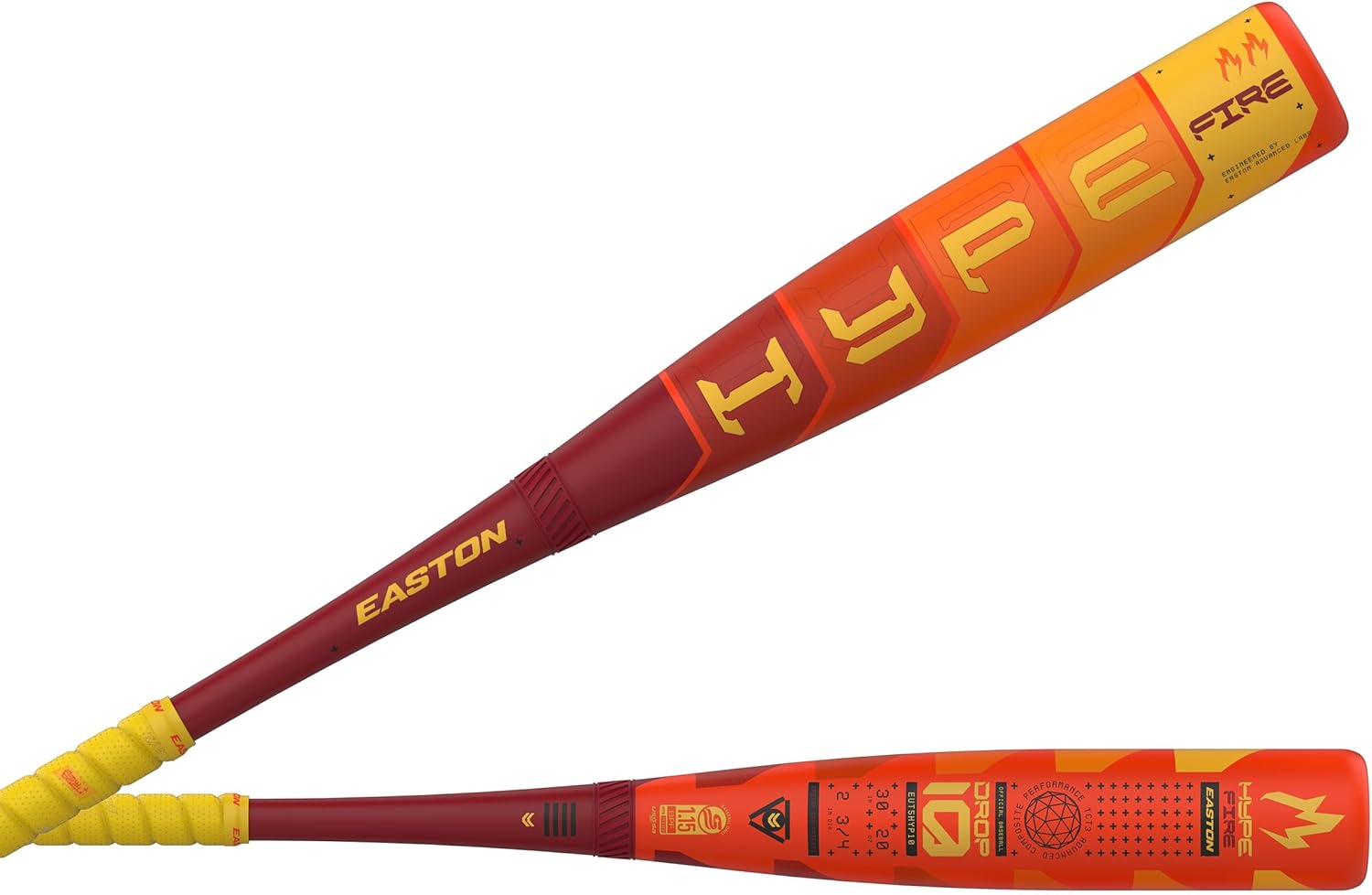How the Great Texas Migration is Reshaping Select Baseball in North Texas
A Deep Dive into Demographic Shifts, Rising Costs, and the New Era of Competition
Texas, and specifically the North Texas region, has firmly established itself as the national epicenter for domestic migration. This trend is led by an unprecedented influx of residents from California, with significant contributions from states like Florida and New York.1 This demographic shift is not monolithic; it is characterized by a substantial cohort of high-income households, particularly from California, which is fundamentally altering the economic landscape of discretionary industries, including competitive youth sports.4
The population boom is most intensely concentrated in the northern exurbs of the Dallas-Fort Worth (DFW) metroplex. Cities such as Celina, Frisco, and McKinney are experiencing explosive growth, creating new, talent-rich, and increasingly self-sustaining youth sports ecosystems that are beginning to challenge the traditional geographic power centers of the region.5
This influx of families has supercharged the already hyper-competitive North Texas Select Baseball market, leading to a significant market paradox. On one hand, the talent pool at the elite levels has deepened, intensifying competition. On the other hand, the surge in demand has led to market saturation and the proliferation of lower-tier teams, resulting in a significant dilution of the overall talent pool and a blurring of the “select” designation.8
The convergence of rapid population growth and the arrival of high-income new residents has ignited an infrastructure “arms race.” Hundreds of millions of dollars are being invested in new, state-of-the-art sports complexes designed to serve as regional and national tournament hubs. This, in turn, has dramatically escalated the financial burden on participating families, with annual costs per player now ranging from $4,000 to over $15,000.
Introduction: The Boom That Changed the Game
North Texas has become more than just a hotbed for baseball — it’s now the epicenter of a national youth sports transformation. With families pouring in from California, New York, Florida, and beyond, the North Texas Select Baseball ecosystem is undergoing a seismic shift.
More talent. More teams. More competition. And yes — much more cost.
This guide breaks down exactly how the Texas migration wave is impacting families, coaches, and organizations, and what you need to know to succeed in this fast-evolving landscape.
1. The Great Texas Migration: What’s Really Happening?
Texas Leads the Nation in Inbound Migration
According to U.S. Census Bureau data, Texas consistently ranks as a top destination for interstate movers, a trend that has accelerated in recent years.3 Between July 2023 and July 2024, the state saw a net domestic migration increase of 85,267 people, the highest in the country.2 This figure, while substantial, represents a moderation from the peak of the “Pandemic Housing Boom,” when Texas saw a net domestic migration of over 222,000 in 2022.2 Despite this cooling, the state’s popularity remains robust. In early 2024, Texas was the number one state in the country by pure search volume for moves, with data indicating that for every one person leaving the state, 1.36 newcomers arrive.3 This sustained inflow is driven by a combination of factors, including a strong economy, a favorable tax environment with no state income tax, and a lower overall cost of living compared to many of the states from which new residents originate.3
Over 85,000 people moved to Texas between 2023 and 2024 — with the Dallas-Fort Worth (DFW) area receiving the lion’s share. Cities like Frisco, Celina, Prosper, and McKinney are exploding in population, adding tens of thousands of new residents annually.
California Is Driving the Shift
The biggest influx comes from California — bringing with it a higher average household income ($145,960). That matters because select baseball is not just a game here; it’s an investment.

2. Where the Boom Hits Hardest: North Texas Hotspots
These aren’t just fast-growing cities — they’re becoming new select baseball ecosystems:
-
Celina: +30.9% population growth in 1 year
-
Frisco: Over 230,000 residents and counting
-
Prosper ISD: 87.8% school enrollment growth
-
Melissa ISD: 116.1% growth in just five years
These “boomtowns” are now producing their own talent, no longer relying on Dallas or Fort Worth clubs. If you’re a coach or organization, it’s time to go where the families are.
| City / School District |
2023 Population Enrollment |
2024 Population / Enrollment |
Numeric Growth (1-Year) |
Percentage Growth (1-Year) |
| Cities | ||||
| Celina | 35,028 | 45,854 | 10,826 | 30.9% |
| Frisco | 225,072 | 231,768 | 6,696 | 3.0% |
| McKinney | 209,626 | 214,871 | 5,245 | 2.5% |
| Princeton | 22,083 | 28,457 | 6,374 | 28.9% |
| School Districts | (2019-2024) | (2019-2024) | (5-Year) | (5-Year) |
| Prosper ISD | 16,857 | 31,651 | 14,794 | 87.8% |
| Melissa ISD | 3,580 | 7,735 | 4,155 | 116.1% |
| Northwest ISD | ~25,000 (2019-20) | ~32,000 (2024-25) | ~7,000 | ~28.0% |
| City data reflects Jan. 2023 to Jan. 2024 estimates from NCTCOG.5 School district data reflects a five-year period from Fall 2019 to Fall 2024 from PERC at Texas A&M and Community Impact.23 | ||||
3. The Explosion of Select Baseball Teams: More Isn’t Always Better
North Texas now has hundreds of select teams, creating what some call a “Wild West” baseball market. Unfortunately, not all “select” teams are truly competitive.
Organizational Structure and Market Saturation
The North Texas Select Baseball landscape is comprised of a vast and diverse array of organizations. These range from single-team operations, often parent-coached, to large, multi-team, nationally recognized clubs that function as significant business enterprises. Prominent organizations include the Dallas Mustangs, Texas Stix, Canes NTX, Dallas Tigers, and Texas Oilers, among many others.26 The sheer number of teams is a defining characteristic of the market, with one resource describing “hundreds of teams across the region”.31
This proliferation has led to a state of extreme market saturation. Observers and participants describe an “insane” and “over-saturated” environment where, on any given weekend, a single age division (e.g., 11U) might see 10 to 20 different teams competing in multiple, simultaneously occurring tournaments.8 The barrier to entry for starting a new team is relatively low, leading to a constant churn where new organizations “pop up” every season. Many of these new entrants are perceived to be of recreational quality but adopt the “select” or “travel” branding, further crowding the market and creating confusion for parents.
The Tiered System of Competition
 To bring order to this crowded market, a distinct competitive hierarchy has been established. Teams are generally classified into three primary tiers, which dictate the level of competition, travel, and financial commitment required:
To bring order to this crowded market, a distinct competitive hierarchy has been established. Teams are generally classified into three primary tiers, which dictate the level of competition, travel, and financial commitment required:
- AA Division: This is the entry level for select baseball. It is designed for beginner to developing select teams and generally involves local or regional tournaments with a focus on more competitive play than recreational leagues.32
- AAA Division: This tier is for more experienced and skilled teams. Competition is significantly higher, and participation often involves travel to state or major regional tournaments.32
- Majors Division: This is the highest and most elite level of youth baseball. Teams are composed of top-tier players, rosters are highly selective, and competition takes place in the most prestigious regional and national tournaments.32
This tiered structure is fundamental to the market’s dynamics. It creates a clear pathway for advancement and a “promotion and relegation” culture, where teams and players are constantly striving to move up the competitive ladder. This system reinforces the market’s professionalized nature, where performance and rankings are paramount.
What It Means for Parents:
-
The “select” label is often misleading
-
High fees don’t always equal high-quality coaching
-
It’s harder than ever to evaluate which teams are worth the investment
4. The Talent Pool Paradox: Better at the Top, Weaker at the Bottom
While the top-tier Major and AAA teams are stronger than ever, the overall pool is diluted. Why?
-
Elite players from California and Florida raise the ceiling
-
Inexperienced families start new teams without the infrastructure to support development
The result? Wider gaps in talent, and a confusing experience for parents looking for the right fit.
5. The Rise of Baseball Tourism: Infrastructure Arms Race
Booming population + booming demand = new $10M+ facilities popping up across the region:
-
🏟️ Roanoke Sports Complex – 8 fields, $70M
-
🏟️ AP Ranch Expansion – $30M into elite-level programming
-
🏒 RYSE Energy StarCenter – 225,000+ sq ft, multisport destination
These aren’t just fields. They’re destinations — turning North Texas into a national hub for youth sports tourism.
6. Follow the Money: How Costs Are Skyrocketing
Participation in North Texas Select Baseball represents a significant financial investment for families, far exceeding the costs of traditional community sports. The high costs, specialized coaching, focus on showcases, and intense competition reflect a fundamental shift where youth baseball is treated less as a recreational activity and more as a serious, pre-professional endeavor. The cost structure is prohibitive for casual participation and mirrors the investments required for pre-professional training in other fields like music or the arts. Organizations explicitly state their mission is to prepare players for the “next level”—college and professional baseball—justifying the high price point.29
The total financial commitment is composed of several layers of expenses:
- Team and Registration Fees: This is the base cost and typically ranges from $1,000 to $5,000 per player, per season. These fees cover coaching salaries (which can be substantial for coaches with professional or collegiate experience), facility rentals for practices, insurance, and administrative costs.12
- Tournament and Showcase Costs: Entry fees for weekend tournaments can range from $300 to over $1,000 per team. Families also incur costs for gate fees, which can be $10-$20 per adult per weekend.7 High-profile showcases for individual players can add another $200 to $500 per event.12
- Travel Expenses: This is often the largest and most variable cost. For teams competing at the AAA and Majors levels, the schedule includes frequent travel across the state and country. These expenses include fuel, flights, hotels, and meals, and can easily add $2,000 to $8,000 per season to a family’s budget.12
- Equipment and Gear: The demand for high-performance equipment is a constant expense. A single elite-level bat can cost between $200 and $500, with high-quality gloves ranging from $150 to $400. Uniforms, cleats, and protective gear add several hundred dollars more annually.12
- Private Lessons and Training: To maintain a competitive edge, many families invest in private instruction outside of team practices. One-on-one lessons for hitting or pitching typically cost between $50 and $150 per hour.12
When all costs are factored in, a family can realistically expect to spend between $4,000 and $15,000 per year for one child to participate in the North Texas Select Baseball ecosystem.12 This significant financial barrier to entry provides essential context for understanding how the influx of high-income families is impacting the market.
With higher-income families in the mix, prices are soaring:
| Category | Low Estimate | High Estimate |
|---|---|---|
| Team Fees | $1,500 | $5,000 |
| Tournament Travel | $2,000 | $8,000 |
| Showcase/Tryout Fees | $500 | $3,000 |
| Gear (Bats, Gloves, Uniforms) | $500 | $2,500 |
| Private Lessons | $500 | $3,000 |
| Annual Total | $5,000 | $21,500+ |
For many families, this is becoming the cost of entry just to compete.
[/themify_col]
7. Professionalization of Youth Baseball
The Talent Pool Paradox: Elite Competition and Mass Dilution
The population boom has created a complex and seemingly contradictory effect on the quality of competition, which can be termed the “Talent Pool Paradox.”
At the highest echelons of the sport—the Majors and high-AAA levels—the competition has become fiercer than ever. The arrival of thousands of new families, including many from established baseball hotbeds like California and Florida, has deepened the elite talent pool.37 Established, top-tier organizations now have a larger base of skilled players from which to draw, allowing them to field “super teams” capable of competing on a national stage. This concentration of talent at the top raises the bar for what it takes to be considered an elite player in the DFW region.
However, this intensification at the top is occurring simultaneously with a significant dilution of talent across the broader market. The explosive demand for participation from new families, many of whom are new to the select baseball environment, has spurred the creation of an “insane number” of new teams.8 Many of these new teams, while branded as “select,” are functionally at a recreational skill level. This proliferation spreads the available talent more thinly across a much larger number of rosters. The result is a widening chasm between the truly elite programs and the vast number of mid- to low-tier “select” teams. For new families moving into the area, this makes the landscape incredibly difficult to navigate. The “select” label has become increasingly ambiguous, and parents are often confused about where to place their children, leading to a “diluted experience” where teams may pay high fees but receive a level of competition and coaching that is not commensurate with the cost.8
The Arms Race for Infrastructure: Fields of Gold
The rapid, concentrated population growth in the northern suburbs has created a severe “field shortage crisis”.38 Municipal and school district athletic fields, the traditional backbone of youth sports, are overwhelmed as demand for practice and game space dramatically outpaces supply.39 This scarcity is compounded by the shift toward year-round programming for multiple sports like soccer, lacrosse, and flag football, all of which are competing for the same limited turf.
The “Californians”
Given that California is the single largest source of new residents to North Texas, it is crucial to analyze the specific cultural impact of this group on the established norms and philosophies of the local baseball community. Both Texas and California are recognized as premier national hotbeds for baseball talent, each with a deeply ingrained culture of high-level youth and high school competition.37 Therefore, the influx of families from California is not introducing a foreign concept but is instead acting as a powerful accelerant on pre-existing trends toward the professionalization of youth sports.
Families relocating from affluent coastal areas often arrive with a set of high expectations shaped by their previous experiences. Research indicates a national trend toward increasingly intensive, time-consuming, and financially significant parental involvement in youth sports, a culture that is particularly well-established in competitive markets like those in California.55 These parents often view youth sports as a critical component of their child’s development and a potential pathway to higher education, and they are accustomed to a “pay-for-quality” model.
This mindset directly impacts the North Texas market in several ways. These new residents increase the customer base for, and expectation of, more sophisticated, data-driven coaching models. They are more likely to seek out programs that utilize modern technology like Rapsodo (for pitching and hitting analytics) and Blast Motion (for swing mechanics), which were once reserved for collegiate and professional levels.7 This demand pushes local organizations to invest in such technologies and in coaches who are qualified to use them, moving the entire market away from the traditional, less formal “daddy ball” model.
Furthermore, the willingness of this demographic to invest heavily in their children’s athletic pursuits—through high team fees, private lessons, and travel—reinforces and validates the high-cost, high-commitment business model that has become prevalent in the region. Their arrival provides a ready and willing market for the new, multi-million-dollar sports complexes and the elite training programs they house. In essence, the “California Effect” is an acceleration of professionalization. It raises the bar for what is considered a top-tier program, compelling local organizations to adopt more “professional” standards in coaching, facilities, and technology to attract and retain this discerning, high-paying clientele. This, in turn, further drives up the cost and intensity for the entire ecosystem, impacting all participants, both new and long-standing.
With so many transplants from high-end, competitive markets like SoCal:
-
Parents expect data-driven training (think: Rapsodo, Blast Motion)
-
Coaching now means certifications, performance metrics, and modern tech
-
The “Daddy Ball” model is dying fast in top-tier programs
California didn’t just bring more players — it brought a new culture of intensity and investment.
The Fraying of Recreational Leagues: A Hollowing Out Effect
The explosive growth of the select baseball ecosystem is having a direct and often detrimental impact on traditional, community-based recreational leagues in the booming suburbs of Frisco, McKinney, and Celina. As the “pay-to-play” travel model becomes the dominant pathway for aspiring players, recreational leagues are experiencing a “hollowing out” effect.9
The most talented and dedicated young players are now often moved into the select system at very early ages (7U or 8U). This siphons off the top-tier talent that historically would have been the stars of their local rec leagues. Perhaps just as importantly, the most engaged and knowledgeable parent volunteers—the individuals who would typically serve as coaches and league administrators—are also drawn into the more demanding select world.53
This exodus of talent and leadership diminishes the quality and competitiveness of the recreational leagues, creating a vicious cycle. As the level of play in rec leagues declines, more families feel compelled to move their children into the select system to find adequate competition, further weakening the community programs.9 While cities like McKinney are still seeing growth in the raw number of rec league participants due to the sheer volume of new residents, these leagues face immense pressure for field space from the better-organized and more lucrative select programs.39 The result is a bifurcation of the youth baseball experience: the “select” track becomes the primary, high-cost path for serious development, while recreational leagues are increasingly relegated to serving absolute beginners or those who are financially excluded from the select model. This trend erodes the traditional role of the community league as a central, accessible hub for player development and community building.
8. What This Means for Coaches, Parents, and Programs

🔑 For Organization Directors:
-
Differentiate or get drowned — offer elite development or affordable alternatives
-
Expand into boomtowns like Celina or Melissa
-
Use transparent pricing models to build trust
🔑 For Coaches:
-
Run a parent meeting at the start of every season
-
Focus on development over short-term wins
-
Stay current on modern coaching methods & arm care protocols
🔑 For Parents:
-
Research teams before committing — not all “select” teams are equal
-
Set realistic goals — scholarships are rare, development is the real win
-
Prioritize your child’s health, not just performance
TL;DR – What You Need to Know
The North Texas Select Baseball world is undergoing a total transformation driven by population booms, economic migration, and rising costs.
Here’s the bottom line:
-
💥 More families = more teams, but also more confusion
-
🧠 Smart parents ask better questions and do real research
-
💸 Expect to pay more — but demand more in return
-
🌎 North Texas is becoming a national epicenter for elite youth baseball
To stay competitive — whether you’re a parent, coach, or program — you need to adapt to the new landscape.
References used in this post:
- TEXAS RELOCATION REPORT – Texas REALTORS, accessed September 16, 2025, https://www.texasrealestate.com/wp-content/uploads/2024TexasRelocationReport.pdf
- Net domestic migration: Which states are gaining—and losing—Americans – ResiClub, accessed September 16, 2025, https://www.resiclubanalytics.com/p/net-domestic-migration-which-states-are-gaining-and-losing-americans
- Lone Star Migration: The moveBuddha 2024 Texas Migration Report, accessed September 16, 2025, https://www.movebuddha.com/blog/move-to-texas-migration-report/
- Where People Are Moving to Texas From – 2024 Study, accessed September 16, 2025, https://smartasset.com/data-studies/moving-texas-2024
- 2024 Population Estimates – DFW Maps, accessed September 16, 2025, https://rdc.dfwmaps.com/pdfs/2024%20NCTCOG%20Population%20Estimates%20Publication.pdf
- North Texas counties lead Texas in population growth | wfaa.com, accessed September 16, 2025, https://www.wfaa.com/article/money/north-texas-growth-kaufman-county-metroplez-texas/287-7de66923-8a6b-4a00-b8e3-5b0b65988b46
- Beyond the Metroplex: A Guide to the Future of North Texas Seletc Baseball: 2026 & Beyond, accessed September 16, 2025, https://www.ntxselectbaseball.com/beyond-the-metroplex-a-guide-to-the-future-of-north-texas-seletc-baseball-2026-beyond/
- Insane number of select teams : r/Homeplate – Reddit, accessed September 16, 2025, https://www.reddit.com/r/Homeplate/comments/1bbfm2b/insane_number_of_select_teams/
- Don’t Play Travel Ball: Stay in the Rec League – Jim Hamilton, accessed September 16, 2025, https://jimhamilton.info/2016/02/09/dont-play-travel-ball-stay-in-the-rec-league/
- Fort Worth’s AP Ranch Scales Youth Sports Access Through $30M Expansion Plans – YSBR, accessed September 16, 2025, https://youthsportsbusinessreport.com/fort-worths-ap-ranch-scales-youth-sports-access-through-30m-expansion-plans/
- Roanoke Sports Complex to attract over 2M annual visitors, officials say – Community Impact, accessed September 16, 2025, https://communityimpact.com/dallas-fort-worth/keller-roanoke-northeast-fort-worth/development/2025/07/10/roanoke-sports-complex-to-attract-over-2m-annual-visitors-officials-say/
- The True Cost of Travel Baseball: Fees, Travel, and Hidden Expenses, accessed September 16, 2025, https://www.ntxselectbaseball.com/the-true-cost-of-travel-baseball-fees-travel-and-hidden-expenses/
- Best Places to Live in Texas For 2024 – Wan Bridge, accessed September 16, 2025, https://wanbridge.com/educate/best-places-to-live-in-texas/
Why Families Are Moving to Texas in 2025: Key Migration Trends You Need to Know, accessed September 16, 2025, https://www.pattenproperties.com/why-families-are-moving-to-texas-in-2025-k









